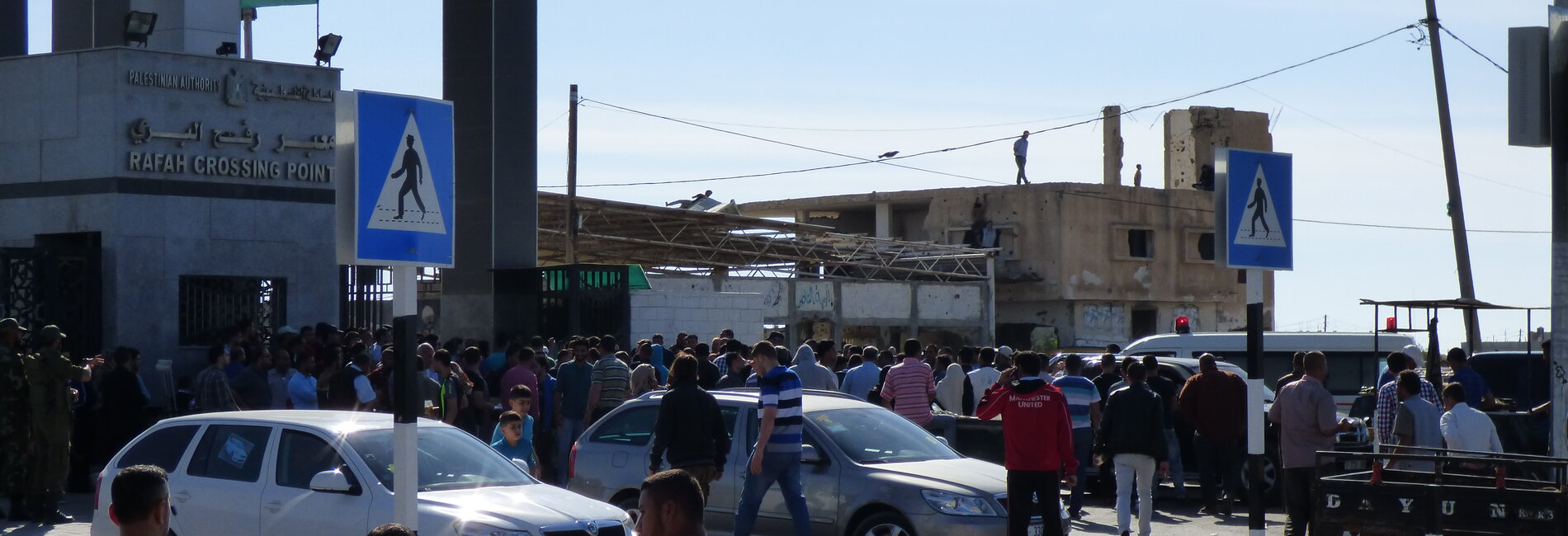Overview: September 2017
Driven by ongoing electricity outages of 18-20 hours a day, an unresolved salary crisis in the public sector, and a blockade restricting the movement of people and goods, the humanitarian situation in the Gaza Strip remains extremely precarious. This is reflected not only in the decline in the availability and quality of basic services, but also in the level of economic activity: according to the latest statistics, the unemployment rate in Gaza in the second quarter of 2017 (April-June) was 44 per cent, up from 41 per cent in the previous quarter.
This Humanitarian Bulletin highlights the disproportionate impact of the crisis on some 49,000 people with disabilities in Gaza, including over 1,100 injured during the 2014 hostilities. Of these, some 5,100 people with chronic respiratory problems are exposed to multiple health complications stemming from interruptions to electric oxygen devices and vaporizers. Institutions treating people with disabilities have also reduced their hours of operation to accommodate the reduced electricity supply and scarcity of fuel to run backup generators. Those with mobility impairments living in apartment buildings face serious challenges moving to and from their homes. Most families are no longer able to cover additional expenses such as replacement of assistive devices, purchase of special hygiene items, or transportation to rehabilitation institutions for their disabled relatives.
The impact of the crisis on the wider population has been compounded by a further decline in access to and from Gaza since the beginning of 2017, as detailed in another article. Of particular concern are delays by the Ramallah-based Ministry of Health in providing financial approval for patients to be treated outside Gaza. Approval of exit permits for these patients by the Israeli authorities has also declined to an average of 53 per cent so far in 2017, marking the fifth consecutive year of decline from an average of 93 per cent in 2012.
On a positive note, developments in late September and early October may pave the way for a resolution of internal Palestinian divisions. In the wake of an Egyptian initiative, Hamas dissolved the Administrative Committee formed earlier this year to run Gaza and agreed to hand back most governmental powers to the Palestinian Government of National Consensus. If successfully implemented, these measures could have a positive impact on living conditions in Gaza and reverse the sense of hopelessness currently experienced across the population.
Despite differences in circumstances and the number of people affected, Palestinians in some areas of the West Bank also face serious constraints to their access to shelter, services and livelihoods, placing some of them at risk of forcible transfer.
This is the case for approximately 12,000 Palestinians living in neighbourhoods adjacent to the settlement compounds in Hebron city. This Bulletin focuses on the impact of a barrier and gate installed recently by the Israeli authorities around two of these neighbourhoods, As Salaymeh and Gheith, where up to 1,800 people have been further isolated from the rest of the city. Additionally, the Israeli authorities announced the establishment of a separate municipal entity to administer the settlements in the city, a measure which may have a negative impact on the 2,000 Palestinians living in the targeted area.
Palestinians living in rural communities entirely located in Area C are another vulnerable population affected by access restrictions. In August, on the eve of the new school year, the Israeli authorities requisitioned nine educational-related structures serving 170 children in three such communities on the grounds of lack of building permits. Anecdotal evidence indicates that the shortage of school infrastructure in Area C and constraints on access to schools outside these communities, has had a range of negative impacts that include the relocation of children away from their parents, and a rise in early dropout rates, especially by girls.
In September, Israeli officials informed the High Court of Justice of a plan to evacuate the Khan al Ahmar Bedouin community, where nearly all structures are under demolition orders, including a school that serves 170 children. This followed a visit by Israeli officials to the community in which residents were told that they must move to a designated relocation site. The community is entirely located in Area C, in the strategic E1/Ma’ale Adumim settlement area to the east of Jerusalem.
As the World Bank reiterated in its most recent report, the removal of existing Israeli restrictions on land use in Area C would improve the humanitarian situation of small rural communities and open significant development opportunities for the wider West Bank population.










